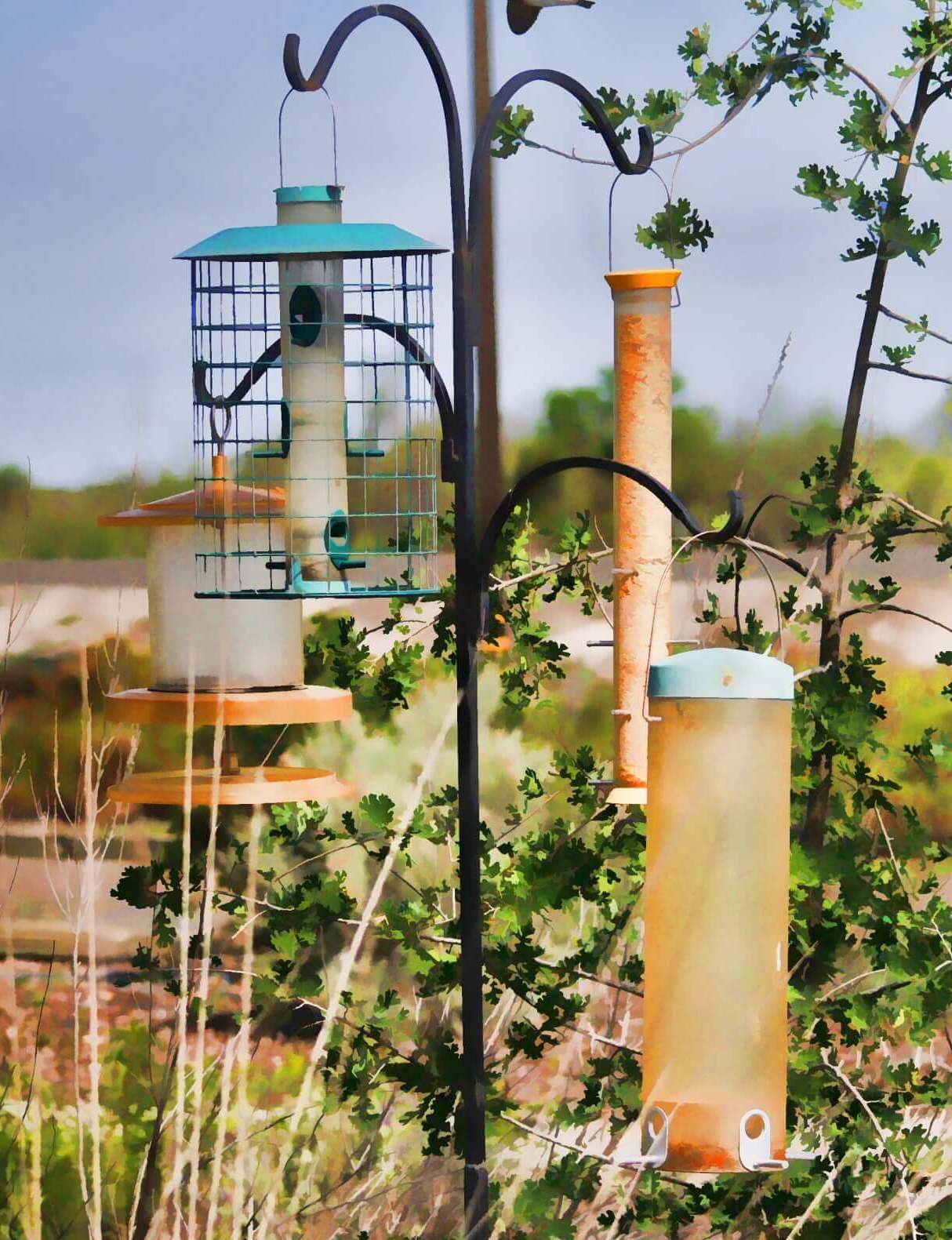- Home
- Feeders
Types of Bird Feeders
Feeding birds provides one of the most enjoyable experiences of attracting birds to your backyard. But which types of bird feeders should you use? There seems to be a bewildering array of forms and shapes and sizes. Read on and we'll clarify the differences between all the types of bird feeders...
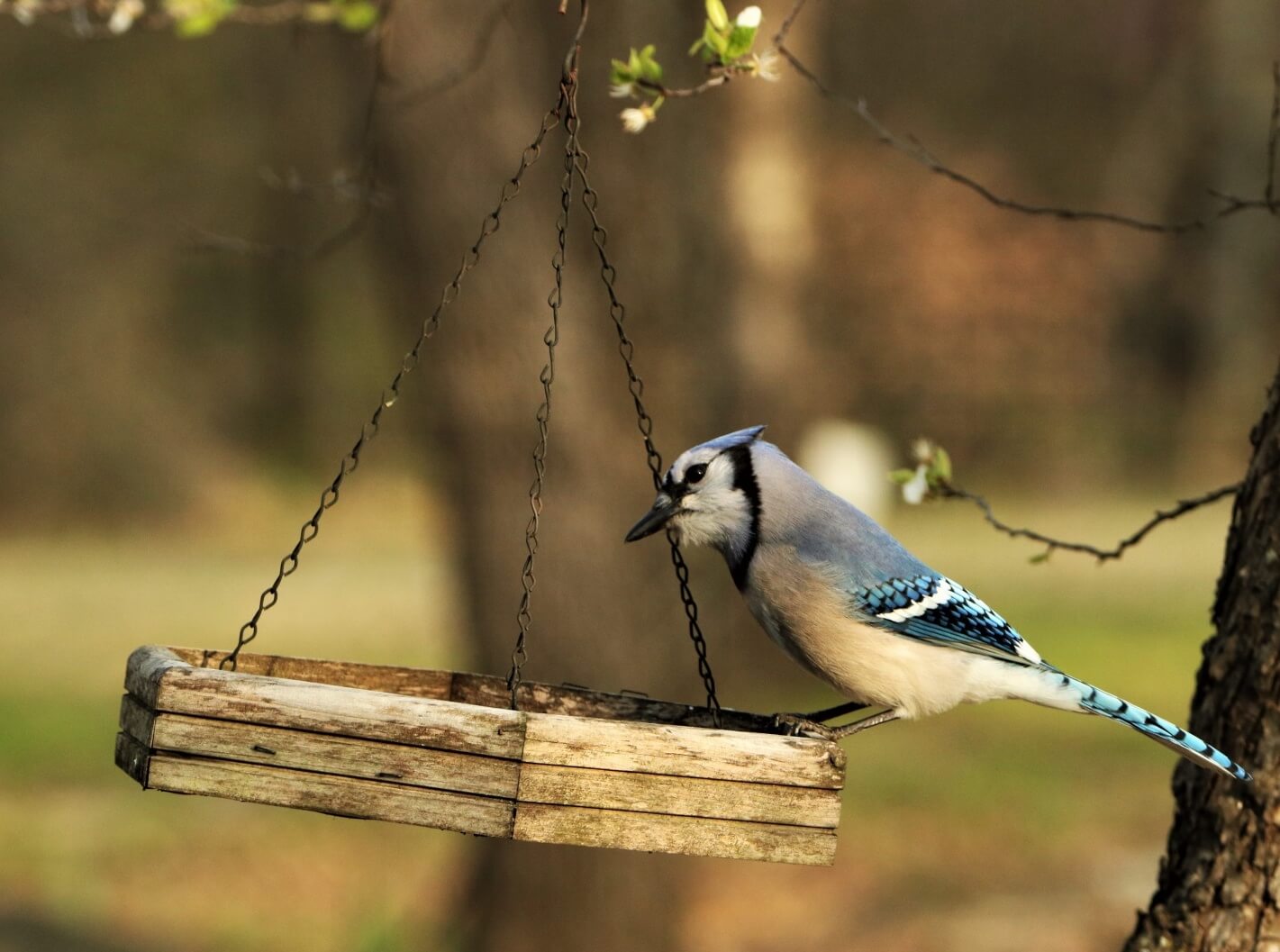
Attracting Birds With Food
The first step to attracting birds is to give them a reason to come to your backyard in the first place. And this means food. Birds have high metabolism rates, and so they need to eat often. A yard with plenty of food is the best attractant for birds.
The two most effective ways to provide food are gardening (designed specifically to attract birds) and by the use of feeders. Gardening is a long-term investment in birds, and may take several years before you start to see the benefits, but you can attract birds quickly with feeders. Set up a feeder, fill it with food, then sit back and wait for the birds to come. Sounds simple, doesn’t it? And it is. But how successful you are depends on many factors, like the type of food. Most important is probably which of the many types of bird feeders you use.
Types of Feeders
If you go into a store selling feeders, or go online to someplace like Amazon, you’ll find a bewildering array of feeders in all sizes, shapes, and styles. The problem is deciding which feeder is best for your own backyard. As it turns out, different feeders hold different types of food, and so, they attract different types of birds. And, where you place a feeder can also influence which birds will visit your feeder.
Here's our overview of the types of feeders on the market. As you read, you should keep in mind several factors, like the ease in refilling the feeder, which types of birds might visit each type, and how easy each one will be to clean (cleaning is important to keep food from spoiling and to help prevent disease in your feathered friends).
Tube Feeders
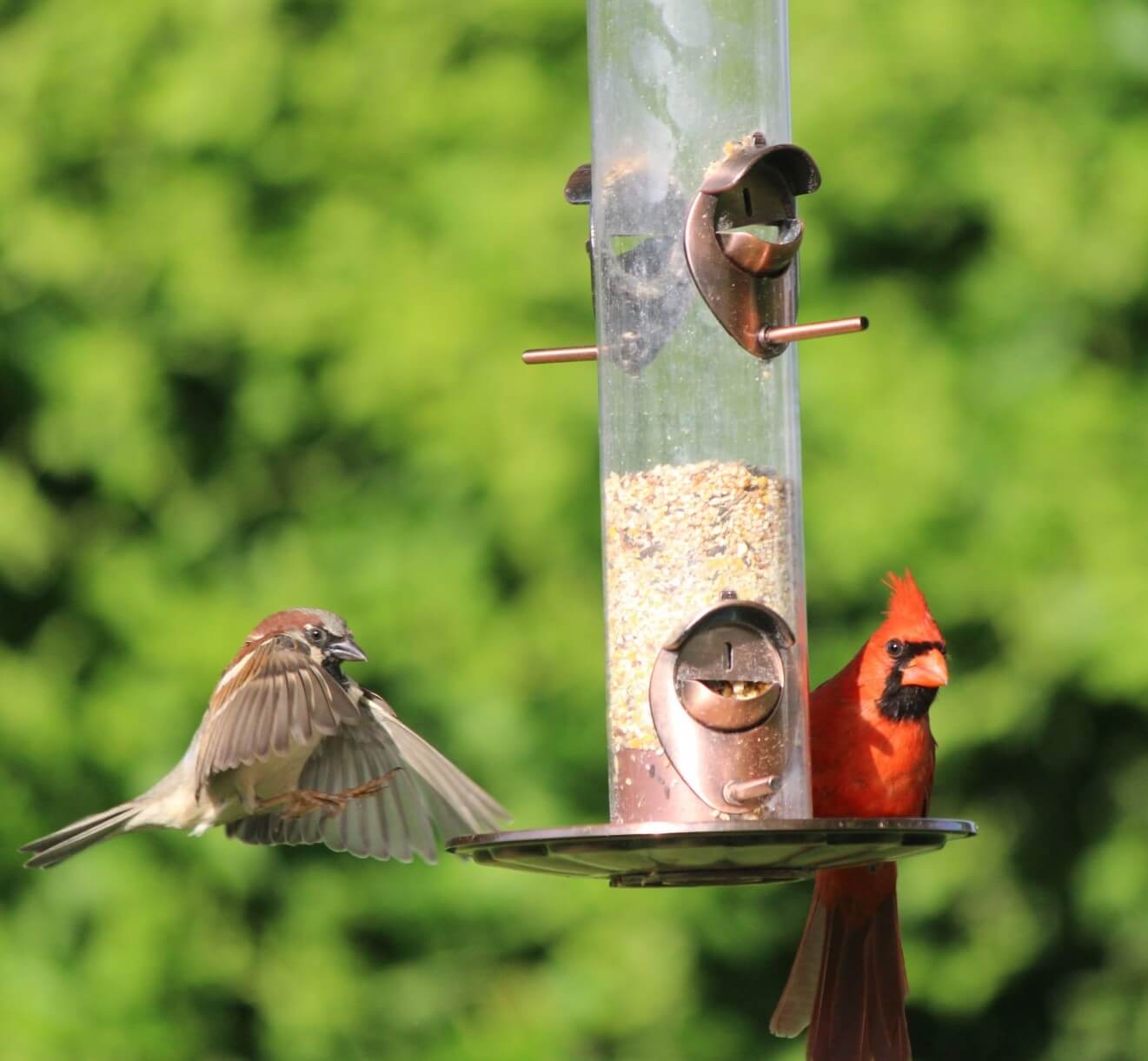
Tube feeders are simply tubes that hang vertically and have openings or screens that allow access to the seeds. The openings are spaced at intervals along the tube. Most tube feeders have small perches below the openings for smaller birds to use while feeding. These feeders can be hung from a hook or attached to the top of a pole. If you mount one on a pole, we recommend adding a squirrel baffle below it to help keep squirrels away.
Some of the birds that tube feeders can attract are goldfinches, finches, chickadees, siskins, redpolls, sparrows, grosbeaks, titmice, and nuthatches.
Click here for more details on Tube Feeders.
Thistle Feeders
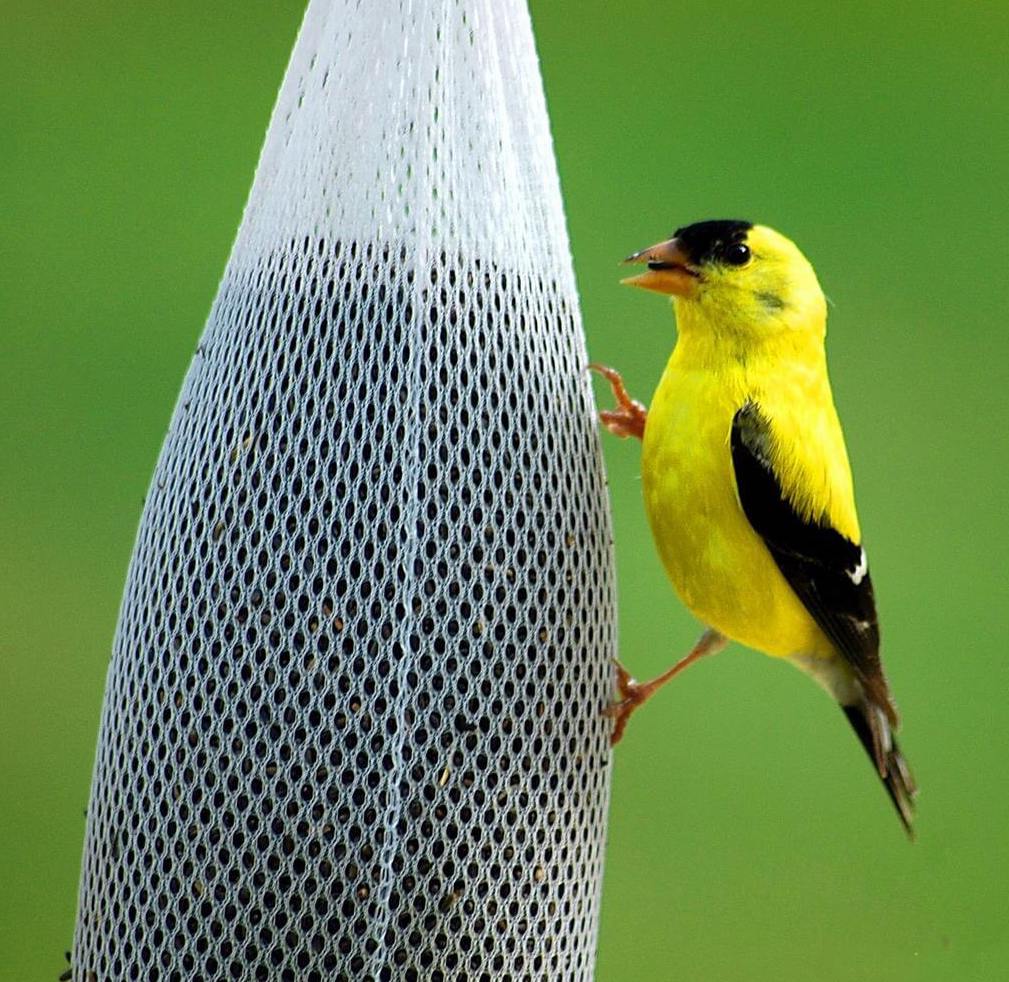
Thistle feeders are a version of tube feeders, designed to hold only nyjer seed, also called thistle seed. These come in two forms: a tube with very small openings for the tiny nyjer seed, and loosely woven cloth bags.
Thistle feeders are effective at attracting goldfinches, finches, redpolls, and siskins.
Click here for more details on thistle feeders.
Platforms
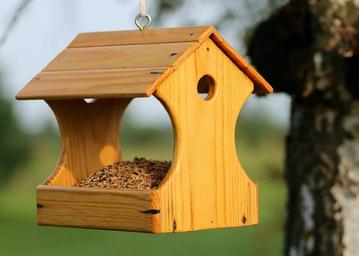
Platform feeders, also called tray feeders, take many forms, but all consist of a flat surface that birds can stand on to feed. Some can be hung from hooks or trees, others attached to poles (be sure and use a squirrel baffle on the pole below the feeder), mounted on short legs and placed on the ground, or stuck to windows with suction cups.
Platform feeders attract the widest variety of birds, including pigeons, doves, starlings, finches, jays, cardinals, sparrows, titmice, towhees, grackles, grosbeaks, robins, grackles, and blackbirds. The smaller window feeders can only accommodate smaller birds like finches, chickadees, and titmice.
To learn more about the many types of platform feeders, click here.
Hopper Feeders
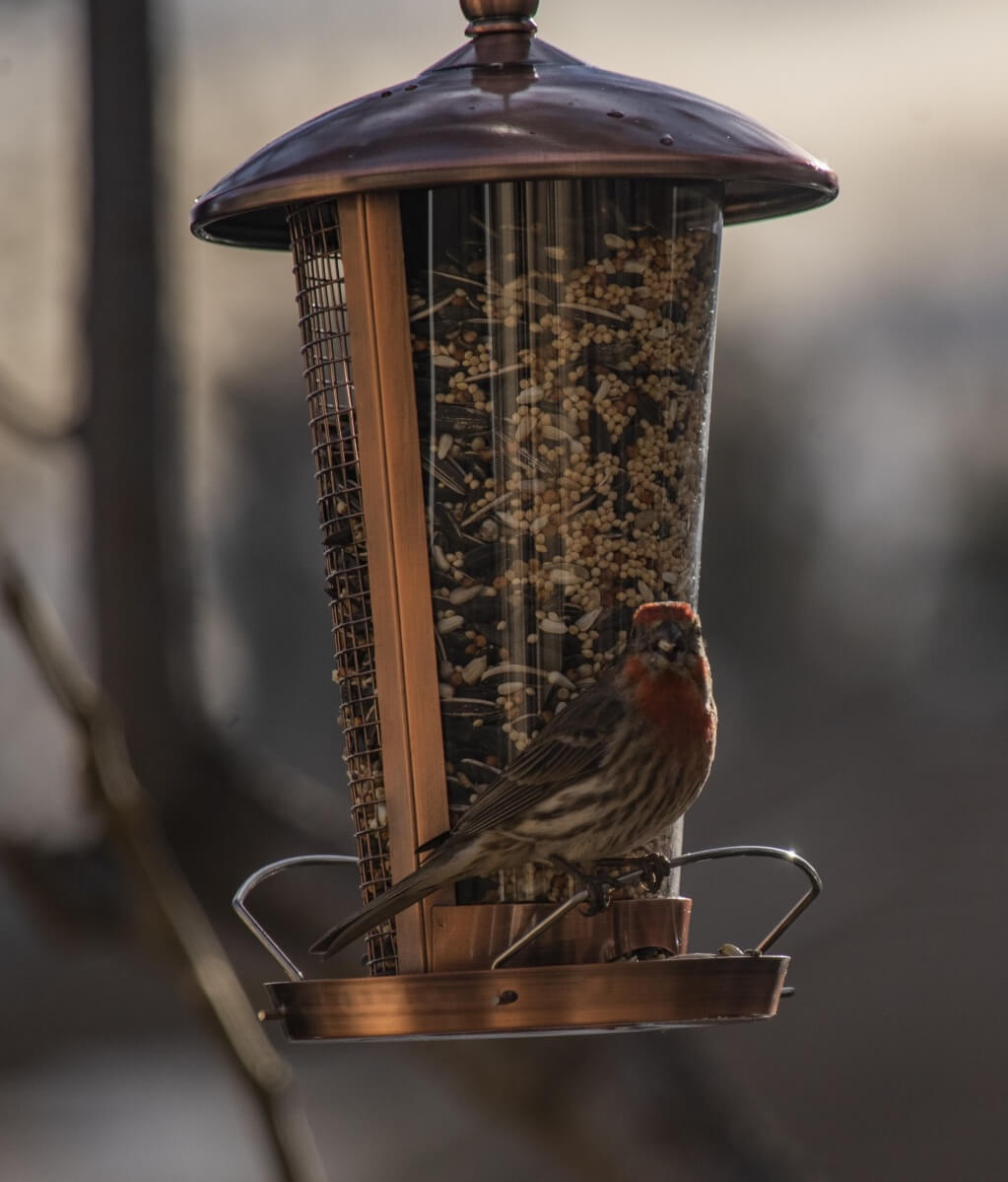
Hopper feeders are very popular because they can hold more seed than others, meaning you don't have to refill as often, and because they can attract quite a wide range of birds. These feeders have a chamber for holding seed, with openings at the bottom where the birds can access the seed, and perches for them to stand on while feeding. They can be hung by a hook or mounted on a pole. Once again, if pole mounted, please use a squirrel baffle to keep them off.
Hopper feeders can attract finches, jays, cardinals, buntings, grosbeaks, sparrows, chickadees, titmice, grackles, nuthatches, woodpeckers, and blackbirds.
For more on the pros and cons of hopper feeders, click here.
Suet Feeders
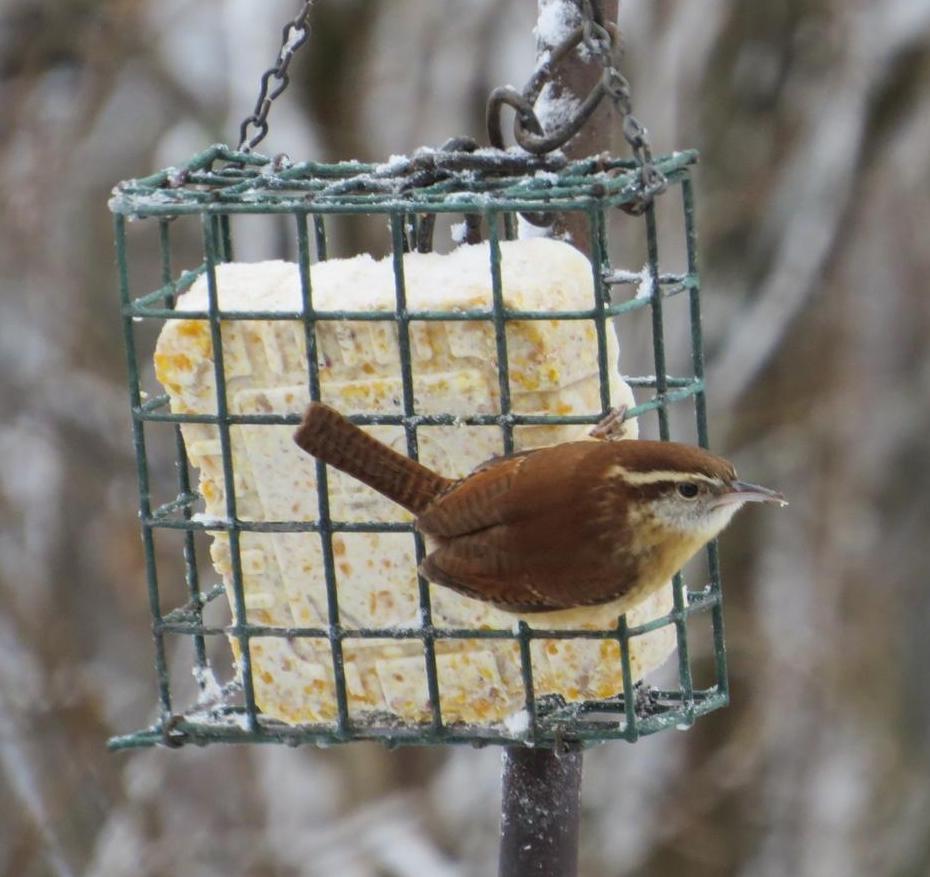
Suet feeders are small cages that hold suet, which is a high-protein mixture of fat or peanut butter, and is often mixed with nuts and berries. Suet feeders are normally hung from the trunk of a tree, although some hopper feeders may have one attached to the side. These feeders appeal to some birds that wouldn't normally come to a seed feeder, like woodpeckers, wrens, warblers, and nuthatches.
Here's more info on suet feeders.
Hummingbird Feeders
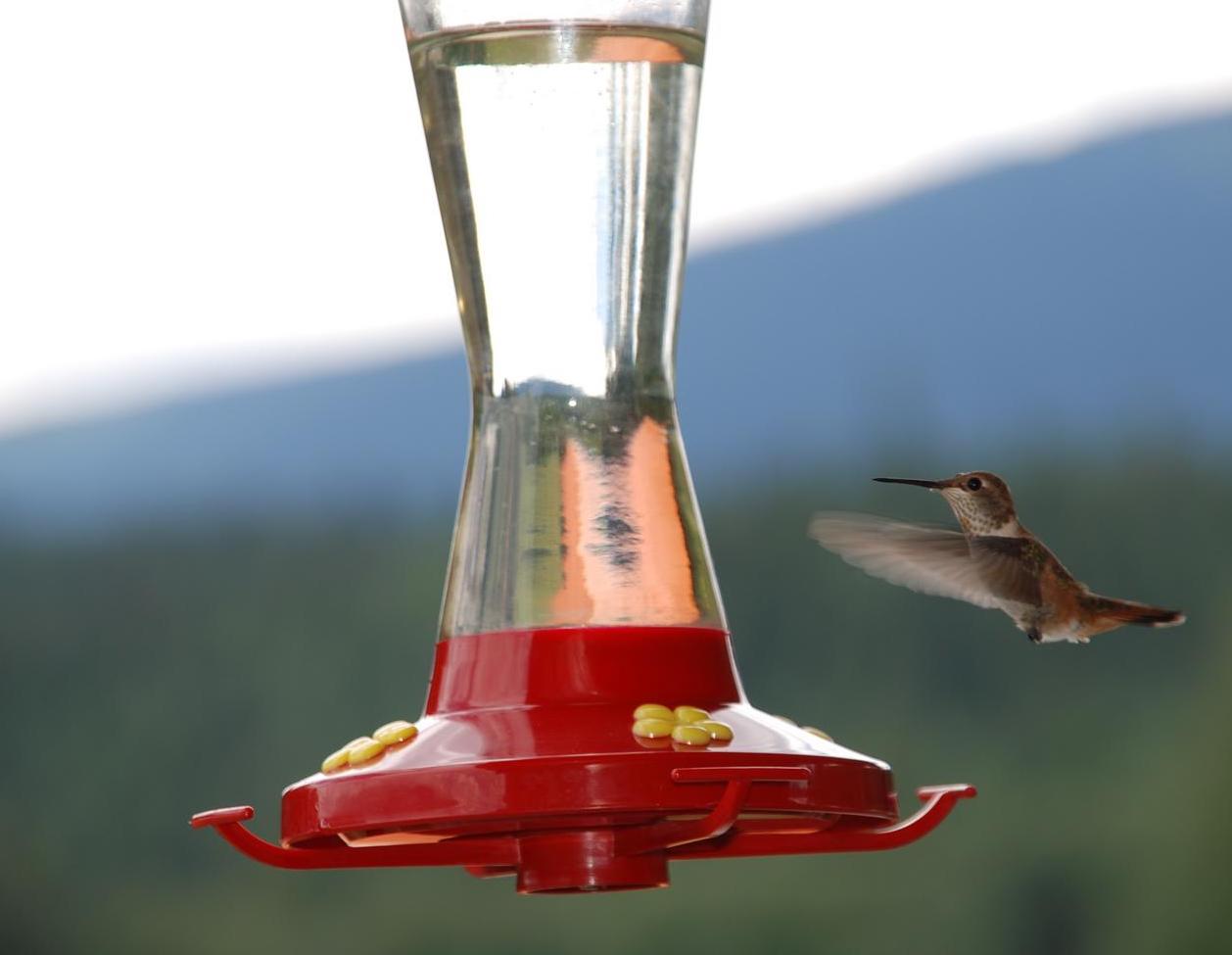
Hummingbird feeders hold nectar or sugar water for... you guessed it - hummingbirds. These jewels of the bird world drink nectar from flowers and the most reliable way to attract them is with hummingbird feeders. Most, if not all, have some red on them because hummers are attracted to red. You have to be a bit more careful with these feeders, in terms of how the sugar water is made, and in maintenance, than other feeders. But the joy of watching hummers at your feeder make up for it.
In addition to hummingbirds, these feeders can be used to attract orioles if the openings to the nectar are large enough.
For more information, please click here.
Fruit Feeders
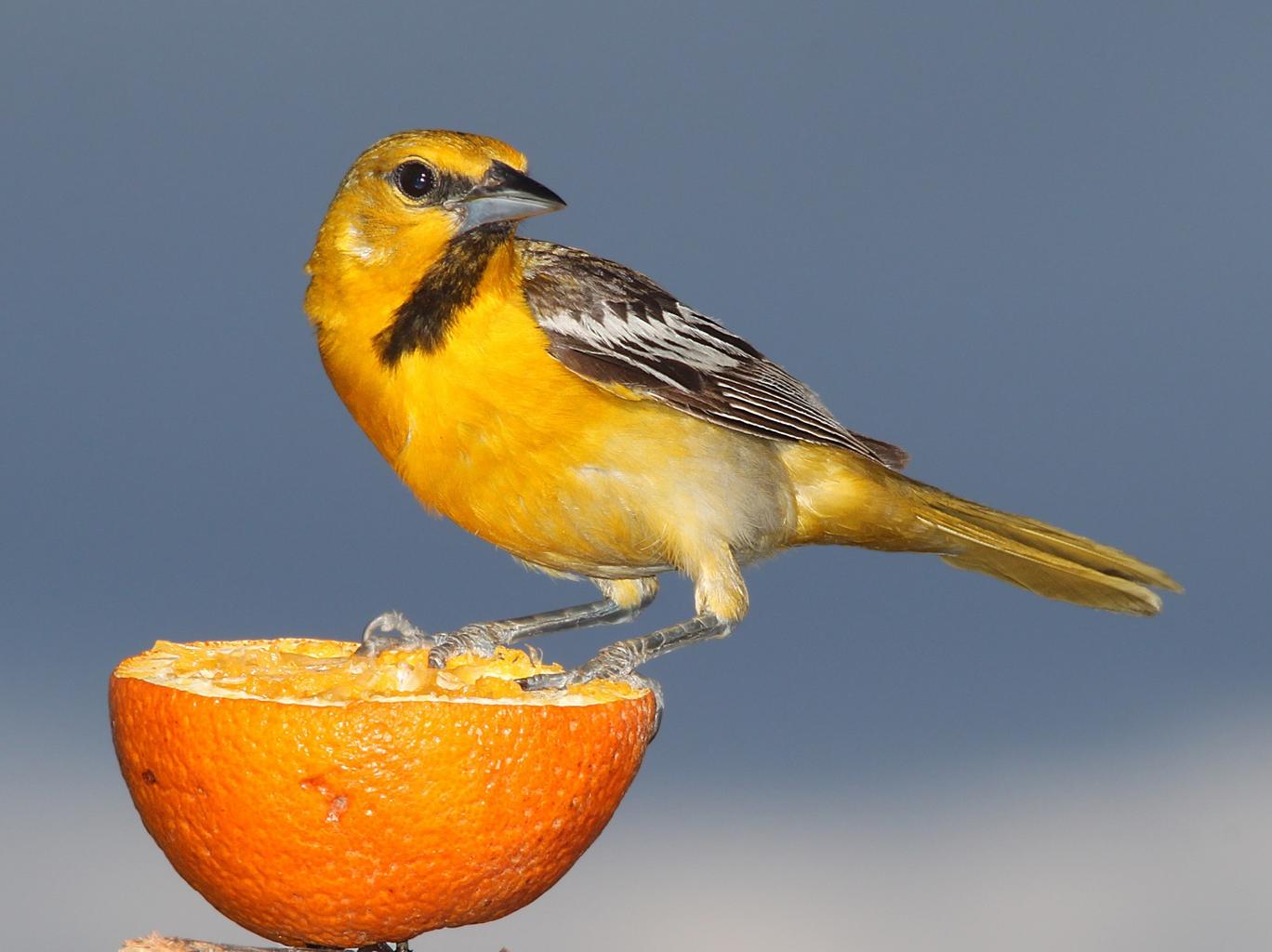
A number of bird species enjoy fruit, and you can attract them with several different types of fruit feeders. The simplest type is to simply hammer a nail into the top side of a tree limb, then impale an orange or apple slice on the nail.
Another approach to providing fruit is a small cup filled with grape jelly, sitting on a stable surface in the backyard, like a platform feeder.
Some of the birds that fruit feeders can attract: orioles, mockingbirds, and catbirds.
Peanut Feeders
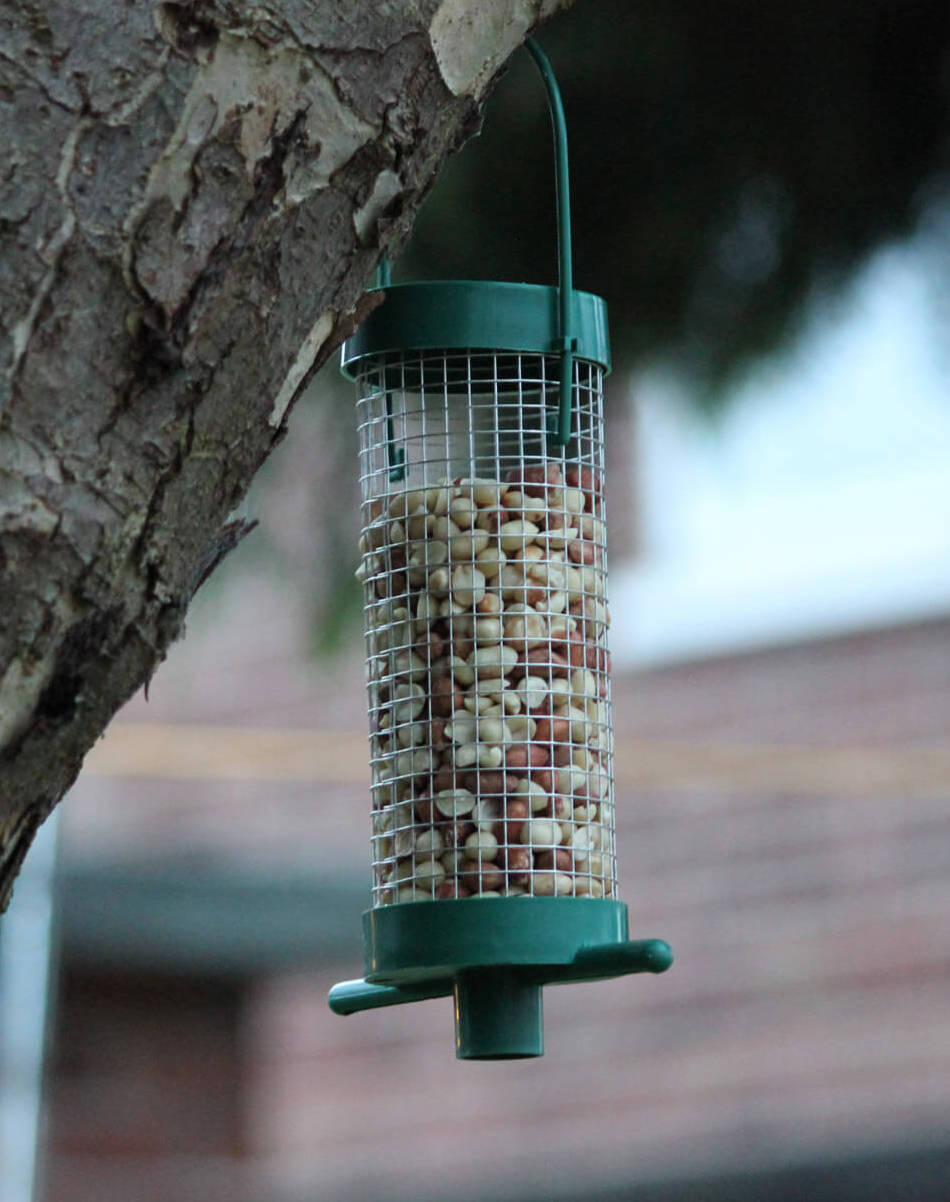
Peanut feeders are typically simple wire meshes that hold either whole or shelled peanuts. They come in several different shapes: tube, wreath, and cone. Larger birds can pull the whole peanuts out and easily open the shell to get at the meat inside. Squirrels can be pests at peanut feeders, however. The larger the mesh openings, the more likely that squrrels will get more than their fair share.
Birds that peanut feeders can attract include: woodpeckers, jays, and cardinals.
Maintenance
All feeders need to be periodically cleaned. The more regularly, the better. For seed feeders, try for every two weeks, but no longer than every four weeks. Hummingbird feeders need to be cleaned once a week.
Cleaning feeders keeps them looking nice and can enhance your enjoyment of bird watching in your backyard. But, that's not the main reason to keep them clean. All feeders can be breeding grounds for bacteria and mold, with the possibility of infecting the birds that choose to eat from dirty feeders. So, for the health of the birds in your backyard, keep them clean.
Feeders containing food that will spoil more easily need to be cleaned more frequently than seed feeders. These include hummingbird, suet, and fruit feeders. But don't neglect the seed feeders. If the food in them gets wet from rain or snow, the seed can go bad quite quickly.
Click here for tips on cleaning your feeders.
Attract a Variety of Birds
As you can see from the above variety of feeders, each type is effective at attracting a different group of birds. But no single type of feeder will attract all the birds that could possibly come into your backyard. Unless you only want to attract a certain species or group of birds, you should provide feeders of several types to attract the widest array of birds. Some people spread different feeders out in various places in the backyard, while others cluster them together to form feeding stations. Either way, make sure you place the feeders where you can observe the birds. And enjoy!
